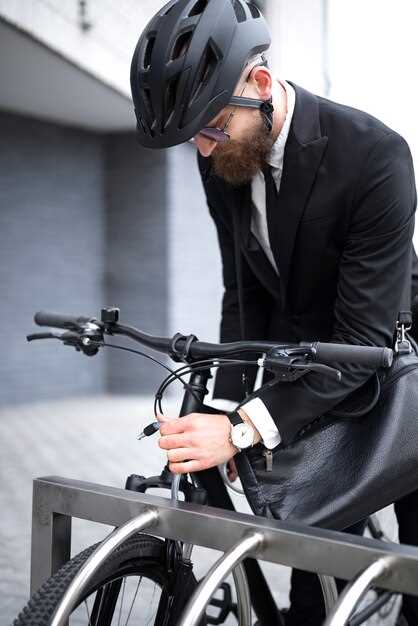

When it comes to cycling, the choice of handlebars can significantly impact your riding experience. The right handlebars not only enhance comfort but also improve control and performance during rides. Whether you are commuting through city streets, tackling rugged trails, or enjoying leisurely weekend rides, understanding the different types of handlebars available is crucial for optimizing your bike setup.
Handlebars come in various shapes, sizes, and materials, each designed to cater to specific riding styles and preferences. For instance, drop handlebars are often preferred by road cyclists for their aerodynamic posture, while flat handlebars offer a more upright position, making them ideal for mountain biking and commuting. Additionally, the width and rise of the handlebars affect how a cyclist interacts with the bike, influencing everything from hand placement to overall balance.
In this article, we will explore the key factors to consider when choosing handlebars for your bicycle, including riding style, comfort, and adjustability. We will also delve into the materials commonly used in handlebar construction, such as aluminum and carbon fiber, examining their strengths and weaknesses. By the end, you will have all the information you need to select the perfect handlebars that suit your cycling needs and enhance your overall riding experience.
Understanding Different Handlebar Types and Their Benefits
Bicycle handlebars come in various shapes and sizes, each offering distinct advantages tailored to different riding styles and preferences. Understanding these types can significantly enhance your cycling experience.
Drop Bars are commonly found on road bikes. Their aerodynamic shape allows for a more aggressive riding position, which can increase speed and efficiency on paved roads. Riders can easily switch hand positions, providing comfort during long rides and giving better control when descending.
Flat Bars are prevalent on mountain bikes and hybrid models. They provide a more upright riding posture, which is ideal for visibility and control in varying terrains. This grip style allows for greater maneuverability and stability, making them suitable for off-road cycling and city commuting.
Riser Bars are similar to flat bars but have a slight upward bend, elevating the grips. This design improves handling by shifting the rider’s weight backward, enhancing stability, especially during steep climbs. They are popular among mountain bikers for their ability to absorb shocks and provide a comfortable ride.
Butterfly Bars, also known as trekking handlebars, offer multiple hand positions and a wide grip area. This versatility reduces fatigue on long rides, making them ideal for touring cyclists. Their ergonomic design encourages a more relaxed seating posture, which is beneficial for extended journeys.
Mustache Bars provide a blend of traditional and modern styles. With their upward curve, they allow for a variety of hand positions while maintaining comfort and control. These handlebars are excellent for city bikes, accommodating both leisurely rides and a more dynamic cycling experience.
City Bars are designed for comfort and are often found on urban bikes. They allow for an upright seating position, which is perfect for navigating city traffic. Their wide grip offers stability and encourages a stress-free riding experience, ideal for everyday commuting.
Choosing the right handlebar type depends largely on your riding style, preferences, and the type of bike you own. By understanding the benefits of different handlebars, cyclists can select the options that best suit their needs, enhancing both performance and comfort on the road.
How to Determine the Right Width and Rise for Your Riding Style

Choosing the appropriate width and rise of handlebars is essential for optimizing comfort and control while riding. The ideal width can enhance stability, while the rise affects your riding posture. Here are key factors to consider for both measurements.
Width: The width of handlebars generally correlates with shoulder width. A good starting point is to measure the distance between your shoulder joints. Narrow handlebars (about 38-42 cm) allow for a more aerodynamic position, making them suitable for racing and road cycling. In contrast, wider handlebars (around 42-46 cm) provide enhanced stability and control, benefiting mountain bikers and those riding on technical terrain.
Personal preference also plays a significant role. If you spend time in a more upright position, such as in recreational cycling, a wider handlebar may promote better leverage and comfort. Alternatively, if your focus is on speed, a narrower handlebar may reduce wind resistance.
Rise: Handlebars come with different rises, which influence your riding posture. A higher rise (over 30 mm) positions you in a more upright stance, improving visibility and comfort for casual riders and those navigating urban environments. This rise diminishes strain on the back and helps maintain a relaxed grip.
A lower rise (around 10-20 mm) or ‘flat’ handlebars are preferred for aggressive riding styles. This position helps lower the center of gravity, increasing control during fast descents and technical maneuvers. For mountain bikers seeking a combination of both, adjustable rise handlebars can provide flexibility for varying terrains.
In conclusion, selecting the appropriate width and rise for your handlebars should be a balance of your body geometry, riding style, and personal comfort. Testing different setups while considering the terrain you ride can help you achieve the optimal configuration for an enhanced cycling experience.
Factors to Consider for Material Selection: Aluminum vs. Carbon

When selecting handlebars for your bicycle, the choice between aluminum and carbon fiber materials plays a crucial role in performance, comfort, and durability. Each material has its own set of characteristics that cater to different riding styles and preferences.
Aluminum is known for its exceptional strength-to-weight ratio. It is lightweight, making it a suitable choice for riders who prioritize speed and agility. Furthermore, aluminum handlebars are typically more affordable than their carbon counterparts, providing a good balance between cost and performance. They are also highly durable, resistant to impact, and less prone to damage over time, making them an excellent choice for everyday cyclists and mountain bikers navigating rough terrains.
On the other hand, carbon fiber handlebars offer superior vibration dampening properties. This feature can significantly enhance comfort during long rides or on uneven surfaces, reducing fatigue and improving overall riding experience. Carbon is also lighter than aluminum, allowing for a more optimized weight distribution, which is particularly beneficial for competitive riders focused on performance. However, carbon handlebars come with a higher price tag and require careful handling, as they can be more susceptible to damage from impacts and crashes.
Riders should also consider their riding style when selecting between aluminum and carbon. For those who ride aggressively or frequently tackle challenging trails, aluminum may be the preferred option due to its resilience and lower replacement cost. Conversely, road cyclists seeking a lightweight setup with enhanced comfort might lean towards carbon fiber. Ultimately, the choice should reflect individual needs, budget, and the specific demands of their cycling discipline.






